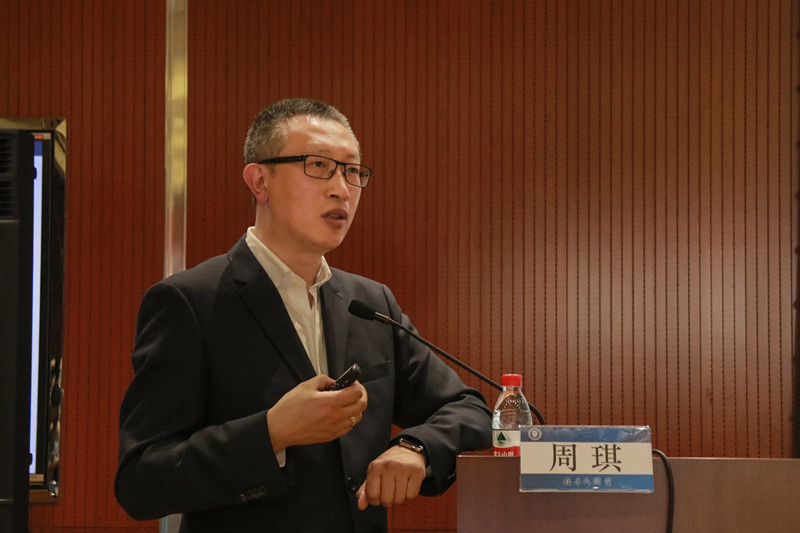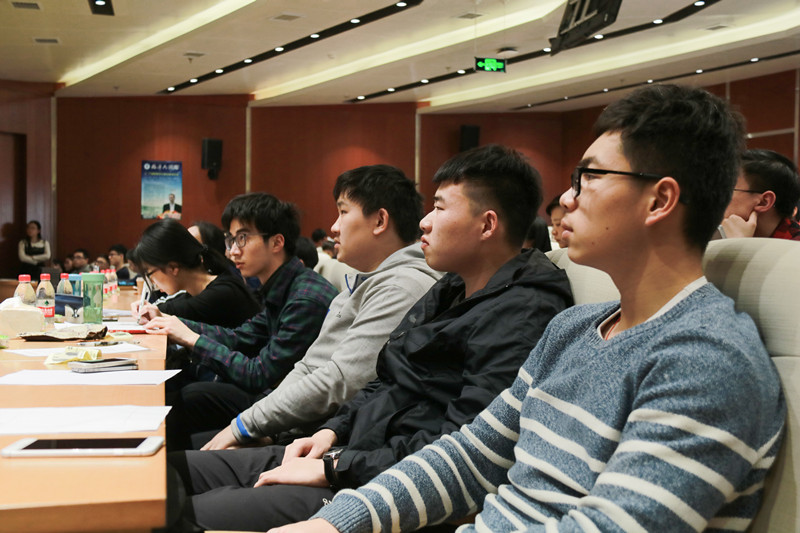Peiyang Lecture: Research on Stem Cells and Its Application in Regenerative Medicine
Recently, in the Lecture Hall of the 1895 Administration Building, Peiyang Park Campus, Tianjin University, Zhou Qi the vice president of academicians of the University of Chinese Academy of Sciences, academician of the Chinese Academy of Sciences, and director of State Key Laboratory of Stem Cell and Reproductive Biology (SRLab) was invited to “Peiyang Lecture” and delivered an academic feast to the faculty and students who were curious about cutting-edge stem cell research as well as its future application.

What is a “Stem Cell”?
“Stem cells are undifferentiated biological cells that can differentiate into specialized cells and can divide to produce more stem cells.” At the beginning of the lecture, Zhou introduced the definition of stem cells and pointed out that stem cells are everywhere in the human body— hemopoietic stem cells take charge of blood renewal, hair follicle stem cells account for the growth of hair. He said, the origin point of humanity is an embryonic stem cell, and the growth of man is equal to the reproduction and transformation of stem cells.
Since stem cells have the ability to transform into different cells, the value of their clinical application is tremendous. It makes it possible to cure patients who suffer from leukemia through bone marrow transplants. Zhou also predicted that in the future, an increasing number of diseases and health problems such as strokes, Alzheimer, and Parkinson’s disease would be cured on account of the development of stem cell research.
“Stem cell research and the application of regenerative medicine have become key focal points in international competitions as well as in the third medical revolution.” He said.
Major Breakthroughs in Stem Cell Research in China
Zhou was fascinated by the intricacies of cloning technology and stem cells when he was a university student. Since then, he decided to devote himself to stem cell study and make a difference in China’s biology arena.
Before introducing major breakthroughs in his laboratory, he briefed us on some nuclear transfer experiments which served as the basis of cloning technology. Then, after several years’ diligent exploration on clones and stem cell research, his laboratory successfully cloned a mouse from an induced pluripotent stem cell and named it “tiny”. The essay which recorded the process and explained the experimental principles, was finally published in Nature magazine. This is a high-level paper about animal cloning and the research contributed to the appearance of induced pluripotent stem (iPS) cell technology, which is now applied in clinical use.
However, Zhou shifted his focus from iPS to haploid stem cells because he thought there were huge risks lying behind iPS. In 2012, his team proved the existence of haploid stem cells - another giant leap in biology. Haploid stem cells can reproduce and differentiate, which means they can even replace sperm and ovum- a finding that subverts the traditional reproductive theory and makes same-sex reproduction theoretically possible.
Later, under the leadership of Zhou, his team created new stem cell-heterozygous diploid embryonic stem cells, subverting the traditional cell theory and revealing a new mechanism of regulating and developing stem cells.
Zhou told the audience that during these days, they are making efforts to challenge Darwin’s evolution theory with research on the Inheritance of acquired traits.“ Research interests should meet the demands of the future development of the country.” he said. Holding this belief, through all these year he has devoted himself to the clinical application of stem cells.

Clinical Application of Stem Cells
Zhou said the current technology as well as the number of donor organs is far from meeting the demands of transplant operations. Therefore, scientific frameworks and long-term industrial development planning have become an urgent problem. He introduced us to three successful examples of clinical stem cell application: the first embryonic stem cell transplant to cure macular degeneration; a bone marrow regeneration clinical experiment to help paralyzed people regain their perceptive ability and participate in sport; and stem cell transplants to cure Parkinson’s disease of the quadrumana.
At the end of the lecture, Zhou encouraged students to explore new technologies in the biological medicine area, and he proposed that students should always bear innovation in mind when they are engaged in any scientific research career.
By: Chen Shupei
Editors: Qin Mian and Christopher Peter Clarke

